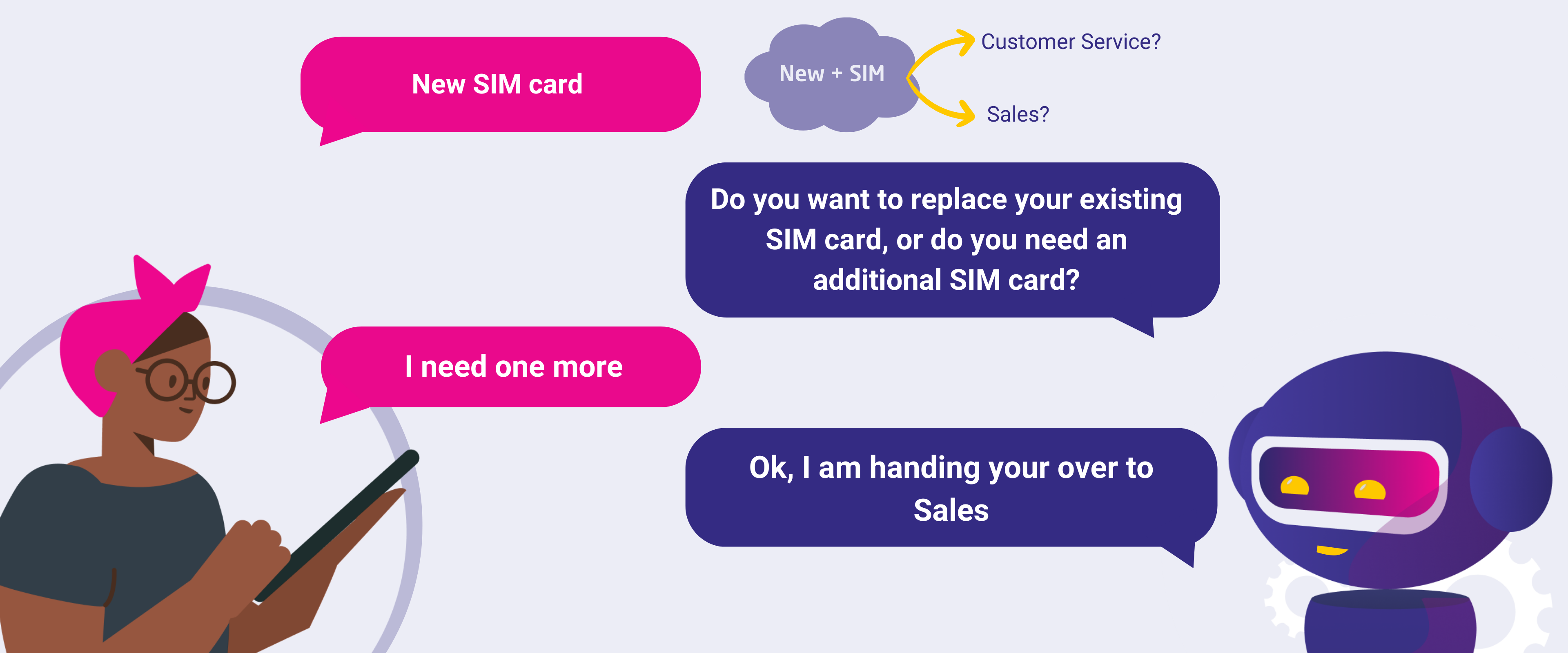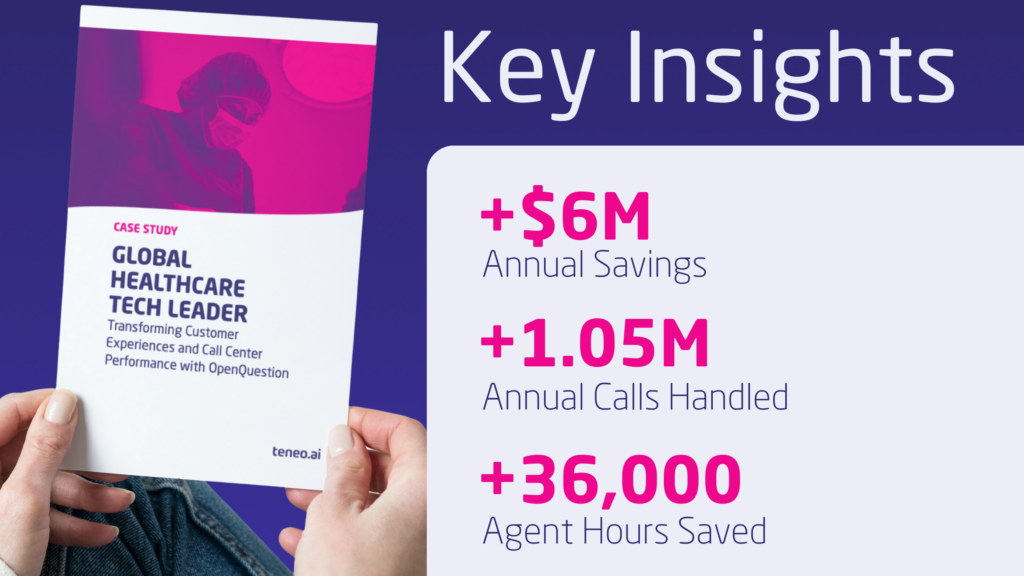Call transfers and long hold times in customer service can significantly impact customer satisfaction (Csat) and First Call Resolution (FCR) rates.
Statistics on Call Transfers on the Contact Center
Research shows that when calls are transferred or put on hold, the customer experience can be negatively impacted. According to a study by SQM Group, 19% of customers who call a contact center are transferred to another agent.
This transfer results in a 12% lower customer satisfaction rating and a 14% lower First Call Resolution rate compared to when a customer is not transferred.
The primary reason for these transfers is often due to the initial voice menu system (IVR) failing to route the customer to the correct agent or due to the agent’s insufficient knowledge, skills, and abilities.
Furthermore, how a customer is transferred can also affect satisfaction and resolution rates. For customers who were “warm transferred” (meaning their call was handed off directly from one agent to another with the customer on the line), satisfaction and resolution rates were significantly higher.
This is because customers do not have to repeat their information to the new agent.
Still, the ideal scenario for most customers is for the first agent they speak with to handle their call without needing a transfer at all.
Making Customers Wait
Hold times also have a considerable impact on customer satisfaction and resolution rates.
The research shows that 46% of customers are put on hold during a call, and this results in a 15% lower customer satisfaction rating and a 19% lower First Call Resolution rate compared to when customers are not put on hold.
The typical hold time is between 30 seconds and five minutes, and customers often prefer a “live hold” (where they can speak to an agent at any time) over being put on mute.
From a cost perspective, American consumers spend, on average, 13 hours per year in calling queues, costing an estimated $38 billion.
A third of complaining customers must make two or more calls to resolve their complaint, and some simply give up out of exasperation after the first call. This is particularly prevalent in industries where customers have few alternatives, such as airlines, cable, and internet services.
To mitigate these issues, many businesses are turning to contact center platforms that can automate many customer service tasks and integrate multiple communication channels.
These platforms streamline the customer service process, reduce the need for call transfers, and provide agents with the necessary context to handle calls more effectively.
In this guide, we will explore strategies to decrease call transfers and improve the overall customer experience in contact centers. We will cover different types of call transfers, the benefits of reducing them, and effective strategies to implement.
Additionally, we will provide real-world examples of enterprises that have successfully solved this problem using AI-powered customer service solutions.
Understanding Call Transfers
Call transfers involve rerouting calls to other agents when the initial agent is unable to resolve the customer’s issue. Common reasons for transfers include wrong routing, the need for specialized assistance, or escalation to senior employees.
Excessive call transfers can result in frustrating experiences for customers and inefficiencies for contact centers.
Types of Call Transfers
Cold Transfers
These occur when the receiving agent has no knowledge of the caller’s issue, leading to the customer having to repeat their problem. Cold transfers can prolong call duration, causing frustration for both parties involved.
Warm Transfers
In this scenario, the first agent provides relevant information about the caller to the second agent, ensuring a smoother transition.
Warm transfers can be done manually or with the help of integrated technology that automatically sends customer information along with the call.

Benefits of Reducing Call Transfers
Reducing call transfers positively impacts several key customer support metrics, including Call Transfer Rate (CTR), First Contact Resolution (FCR), and Average Handling Time (AHT).
It also enhances the overall customer experience, as studies show that customers are likely to discontinue business with a brand after a bad experience.
Strategies to Reduce Call Transfers
Better Call Routing
Implementing techniques such as location-based routing, status-based routing, campaign-based routing, VIP call routing, or even Conversational IVR that can help direct calls to the most suitable agent from the beginning, minimizing the need for transfers.

Ready to improve your call routing? Get in touch!
Conversational IVR
Leveraging this technology enables contact centers to capture caller intent more effectively. Instead of navigating through a list of options, customers can state their reason for calling, and Natural Language Understanding (NLU) interprets their speech, routing them to the most relevant agent.
Learn how Telefónica Germany reduced call transfers and increased IVR resolution rate.
No-Code Platforms for Reducing Call Transfers
Simplify the process of setting up automation for improved call routing techniques. These platforms eliminate the need for extensive coding and allow easy integration of services to optimize call transfers.
Improve Self-Service Options
Enhance self-service channels such as interactive voice response (IVR) systems, chatbots, and knowledge bases. By providing customers with relevant and accurate information upfront, you can reduce the need for them to speak to an agent and potentially eliminate the need for a transfer.
Agent Training and Knowledge Base
Invest in comprehensive training programs for agents to equip them with the skills and knowledge required to handle a wide range of customer inquiries. Additionally, create a robust knowledge base that agents can refer to during calls, reducing the likelihood of transfers due to insufficient information.
Customer Feedback and Analysis
Regularly gather feedback from customers regarding their experience with your contact center. Analyze the feedback to identify recurring issues that lead to transfers and take proactive measures to address them. By understanding customer pain points, you can make targeted improvements to decrease call transfers.
Learn how Telefónica Germany reduced call transfers and increased IVR resolution rate.
Monitor and Optimize Call Metrics
Continuously monitor call metrics such as call duration, transfer rate, and resolution rate. Identify patterns and trends that indicate opportunities for improvement. Set performance goals for reducing transfers and regularly assess progress towards those goals.
Use AI-Powered Analytics for
Leverage AI and machine learning to analyze customer interactions and identify patterns that lead to transfers. AI-powered analytics can provide insights into the root causes of transfers and enable you to take proactive measures to address them.
Real-World Examples for Improved Call Routing
Telefónica Germany
Telefónica implemented the Teneo Conversational IVR solution to enhance customer engagement and support across multiple channels. Teneo Conversational IVR provided real-time answers, personalized experiences, and omnichannel interactions.
- Teneo Conversational IVR handled almost one million voice-based requests per month, along with 200,000 customer requests via SMS and WhatsApp.
- The solution supported the creation of over 400 generic use cases and 20 personalized use cases.
Learn how Telefónica Germany reduced call transfers and increased IVR resolution rate.
Swisscom Reduces Call Transfers
Teneo Conversational IVR served as the first point of contact for Swisscom customers across four languages. It expanded products and services while improving the customer experience. Results achieved include:
- Ensuring natural and continuous conversation beyond simple Q&As.
- Efficiently resolving simple customer requests through easy self-service.
- Assigning inquiries quickly and accurately, resulting in improved customer satisfaction.
Learn more about Swisscom success story with Teneo.
Global Top 3 Technology Provider
Teneo saved agent call time by referring 55% of callers to web resources and reduced misrouted calls from 60% to 30%. Additional achievements include:
- Decreasing Average Handle Time by two minutes per call.
- Reducing customer friction due to multiple transfers.
- Achieving a call containment average of around 60%.
Global Healthcare Tech Company
Teneo Conversational IVR replaced the traditional keypad navigation system with an intuitive and user-friendly interface. Results achieved include:
- Reducing call misrouting by 90%.
- Decreasing the call workload in contact centers by 8%.
- Full integration with existing tech stacks and deployment to handle full traffic within 90 days.
Reducing call transfers is essential for improving customer experiences and optimizing contact center operations.
By implementing better call routing techniques, leveraging conversational IVR, and utilizing no-code platforms, businesses can minimize call transfers and provide exceptional customer experiences.
Best practice examples such as Telefónica Germany, Swisscom, a large software company, and a global healthcare tech company demonstrate the effectiveness of AI-powered solutions like Teneo Conversational IVR in addressing this challenge.
By following these best practices and leveraging AI-driven customer service tools, businesses can decrease call transfers and provide exceptional customer experiences. Remember that continuous monitoring, analysis, and adaptation are crucial for long-term success in reducing call transfers and enhancing the customer experience.
Enhance your customer experience with a free consultation.


